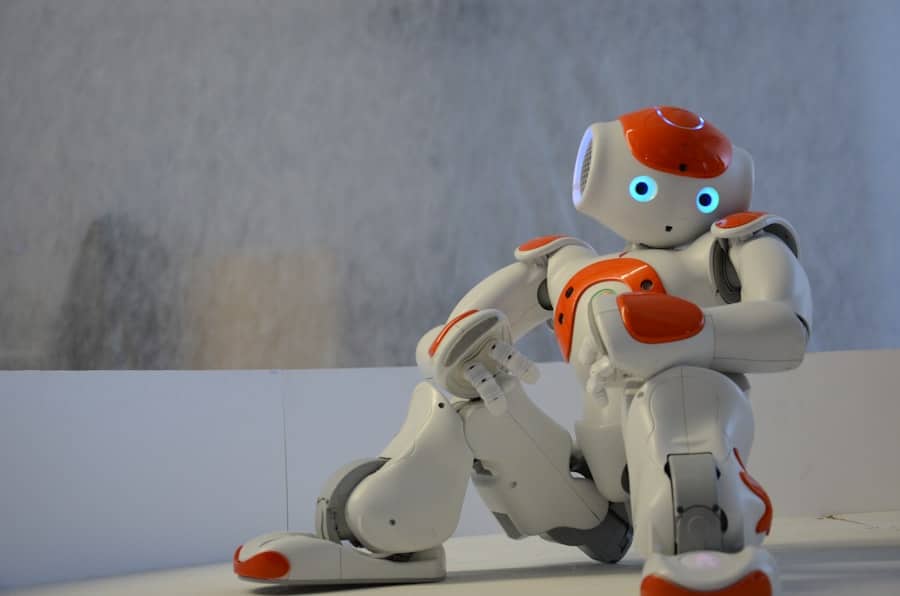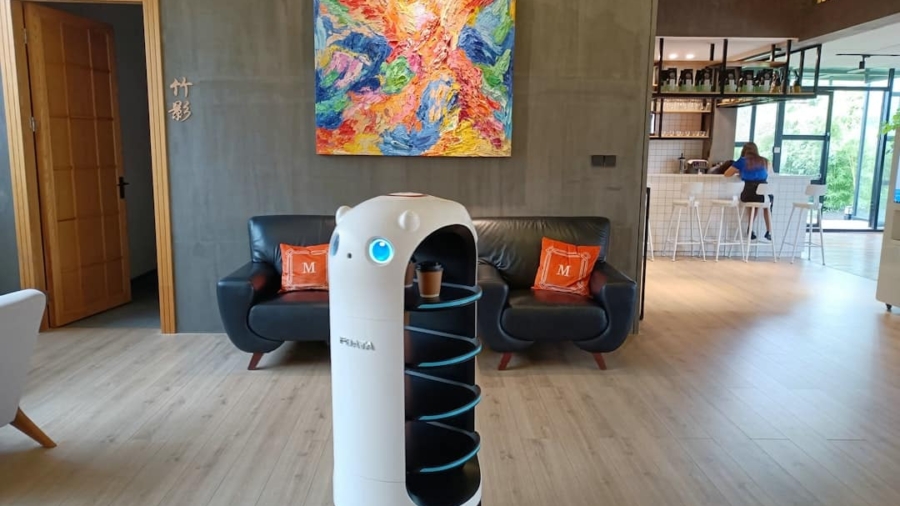The advent of autonomous robots in healthcare delivery marks a significant turning point in the evolution of medical services. These robots, equipped with advanced artificial intelligence and machine learning capabilities, are designed to perform a variety of tasks that enhance the efficiency and effectiveness of healthcare systems. From assisting in surgeries to managing logistics within hospitals, autonomous robots are reshaping the landscape of patient care and operational management.
The integration of these technologies is not merely a trend; it represents a fundamental shift in how healthcare is delivered, promising to improve outcomes for patients and providers alike. As healthcare systems worldwide grapple with increasing demands for services, rising costs, and a shortage of skilled professionals, the introduction of autonomous robots offers a viable solution to many of these challenges. By automating routine tasks and providing support in complex procedures, these robots can alleviate the burden on healthcare workers, allowing them to focus on more critical aspects of patient care.
This article delves into the multifaceted role of autonomous robots in healthcare delivery, exploring their benefits, challenges, and future implications.
Key Takeaways
- Autonomous robots are revolutionizing healthcare delivery by providing efficient and accurate services.
- The role of autonomous robots in healthcare delivery includes tasks such as medication delivery, disinfection, and patient monitoring.
- Benefits of using autonomous robots in healthcare delivery include increased efficiency, reduced human error, and improved patient safety.
- Case studies have shown successful implementation of autonomous robots in healthcare settings, leading to improved patient outcomes and cost savings.
- Challenges and limitations of autonomous robots in healthcare delivery include high initial costs, limited adaptability, and potential job displacement.
The Role of Autonomous Robots in Healthcare Delivery
Autonomous robots play a diverse range of roles within healthcare settings, each tailored to address specific needs and improve operational efficiency. One prominent application is in surgical assistance, where robots like the da Vinci Surgical System enable surgeons to perform minimally invasive procedures with enhanced precision. These robotic systems provide surgeons with greater dexterity and control, allowing for smaller incisions and reduced recovery times for patients.
The integration of robotics in surgery not only enhances the skill set of medical professionals but also leads to improved patient outcomes. In addition to surgical applications, autonomous robots are increasingly utilized for logistical tasks within healthcare facilities. For instance, robots such as TUG and Aethon are designed to transport medications, supplies, and even meals throughout hospitals.
By automating these logistical operations, healthcare facilities can streamline workflows, reduce human error, and ensure that critical resources are delivered promptly. This not only enhances operational efficiency but also allows healthcare staff to dedicate more time to direct patient care, ultimately improving the overall quality of service.
Benefits of Using Autonomous Robots in Healthcare Delivery

The benefits of incorporating autonomous robots into healthcare delivery are manifold and extend across various dimensions of patient care and operational management. One of the most significant advantages is the enhancement of patient safety. Robots equipped with advanced sensors and AI algorithms can monitor patients continuously, alerting healthcare providers to any changes in vital signs or potential complications.
This real-time monitoring capability can lead to earlier interventions and better management of acute conditions, thereby reducing the risk of adverse events. Moreover, the use of autonomous robots can lead to substantial cost savings for healthcare institutions. By automating routine tasks such as inventory management and patient transport, hospitals can reduce labor costs and minimize waste associated with human error.
For example, a study conducted at a large hospital revealed that implementing robotic systems for medication delivery resulted in a 30% reduction in medication errors. These cost efficiencies can be redirected towards enhancing patient care services or investing in new technologies, ultimately benefiting both patients and healthcare providers.
Case Study: Implementing Autonomous Robots in a Healthcare Setting
A notable example of successful implementation of autonomous robots in healthcare is the case of the University of California, San Francisco (UCSF) Medical Center. In 2019, UCSF introduced a fleet of autonomous mobile robots designed to assist with various logistical tasks within the hospital. These robots were tasked with transporting medications, linens, and other supplies across the facility, significantly reducing the workload on nursing staff and other healthcare workers.
The results were impressive; within months of deployment, UCSF reported a 50% reduction in the time spent on supply transport by staff members. This allowed nurses to spend more time attending to patients rather than managing logistics. Additionally, the robots operated around the clock without fatigue, ensuring that essential supplies were always available when needed.
The success of this initiative not only improved operational efficiency but also enhanced staff satisfaction and patient care quality.
Challenges and Limitations of Autonomous Robots in Healthcare Delivery
Despite the numerous advantages associated with autonomous robots in healthcare delivery, several challenges and limitations must be addressed to ensure their successful integration into existing systems. One significant concern is the high initial cost associated with acquiring and implementing robotic technologies. Many healthcare facilities, particularly smaller ones or those operating on tight budgets, may find it challenging to justify the investment required for these advanced systems.
Furthermore, there are technical challenges related to the integration of autonomous robots into existing workflows. Healthcare environments are often complex and dynamic, requiring robots to navigate unpredictable situations while ensuring patient safety. Issues such as software malfunctions or hardware failures can disrupt operations and pose risks to patients if not managed effectively.
Continuous maintenance and updates are essential to ensure that these systems operate reliably within the fast-paced healthcare environment.
Future Implications and Innovations in Autonomous Robots for Healthcare Delivery

The future of autonomous robots in healthcare delivery is poised for significant advancements as technology continues to evolve. Innovations in artificial intelligence and machine learning are expected to enhance the capabilities of these robots, enabling them to perform increasingly complex tasks with greater autonomy. For instance, future robotic systems may be equipped with advanced diagnostic tools that allow them to assist in clinical decision-making processes by analyzing patient data and suggesting treatment options based on real-time information.
Moreover, as telemedicine becomes more prevalent, there is potential for autonomous robots to play a crucial role in remote patient monitoring and care delivery. Robots could be deployed in patients’ homes to provide assistance with daily activities or monitor health conditions while communicating with healthcare providers through telehealth platforms. This could significantly improve access to care for individuals living in remote areas or those with mobility challenges.
Ethical and Legal Considerations of Autonomous Robots in Healthcare Delivery
The integration of autonomous robots into healthcare delivery raises important ethical and legal considerations that must be carefully navigated. One primary concern revolves around patient privacy and data security. As robots collect and process sensitive health information, ensuring that this data is protected from breaches becomes paramount.
Healthcare organizations must implement robust cybersecurity measures to safeguard patient information while complying with regulations such as HIPAA (Health Insurance Portability and Accountability Act). Additionally, there are ethical questions regarding accountability when autonomous robots are involved in patient care. In cases where a robot makes an error that leads to adverse outcomes, determining liability can be complex.
Is it the manufacturer’s responsibility for a malfunctioning robot? Or does accountability lie with the healthcare provider who deployed the technology? Establishing clear guidelines and legal frameworks will be essential as these technologies become more integrated into clinical practice.
The Impact of Autonomous Robots on Healthcare Delivery
The impact of autonomous robots on healthcare delivery is profound and multifaceted, offering numerous benefits while also presenting unique challenges that must be addressed. As these technologies continue to evolve and become more integrated into healthcare systems worldwide, they hold the potential to transform patient care fundamentally.
This collaboration will ensure that the deployment of autonomous robots is guided by ethical considerations while maximizing their potential benefits for patients and healthcare systems alike. The journey toward fully realizing the capabilities of autonomous robots in healthcare is just beginning, but their promise is undeniable as we strive for a more efficient and effective healthcare landscape.
In the rapidly evolving field of healthcare, the integration of autonomous robots is revolutionizing delivery systems, enhancing efficiency, and improving patient outcomes. A related article that delves into the broader technological advancements shaping various industries, including healthcare, is “The Best Tech Products 2023.” This article provides insights into the latest innovations and products that are setting new standards across sectors. For more information, you can read the full article by following this link: The Best Tech Products 2023. This resource offers a comprehensive overview of cutting-edge technologies that are influencing the future of healthcare and beyond.
FAQs
What are autonomous robots in healthcare delivery?
Autonomous robots in healthcare delivery are robotic systems that are capable of performing tasks and functions in healthcare settings without direct human control or intervention. These robots are designed to assist with various aspects of healthcare delivery, such as medication delivery, patient monitoring, and disinfection.
How are autonomous robots used in healthcare delivery?
Autonomous robots in healthcare delivery are used for a variety of tasks, including medication and supply delivery, patient transportation, disinfection of hospital rooms and equipment, and even assisting with surgical procedures. These robots are designed to improve efficiency, reduce human error, and minimize the risk of infection in healthcare settings.
What are the benefits of using autonomous robots in healthcare delivery?
The use of autonomous robots in healthcare delivery can lead to several benefits, including improved efficiency in healthcare operations, reduced risk of human error, enhanced patient safety, and decreased risk of infection transmission. These robots can also help alleviate the burden on healthcare staff, allowing them to focus on more complex and critical tasks.
What are some examples of autonomous robots used in healthcare delivery?
Some examples of autonomous robots used in healthcare delivery include medication delivery robots, autonomous mobile robots for transporting supplies and equipment, disinfection robots equipped with UV-C light technology, and robotic systems designed to assist with surgical procedures. These robots are increasingly being integrated into healthcare facilities to improve patient care and operational efficiency.
What are the challenges associated with the use of autonomous robots in healthcare delivery?
Challenges associated with the use of autonomous robots in healthcare delivery include concerns about patient privacy and data security, the need for proper training and maintenance of the robotic systems, potential resistance from healthcare staff, and the initial cost of implementing these technologies. Additionally, ensuring the safe and effective integration of autonomous robots into healthcare settings requires careful planning and consideration of regulatory and ethical considerations.

